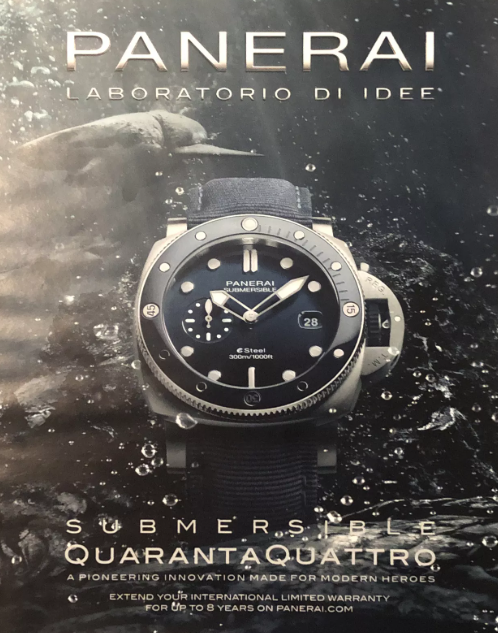- Home
-
brand watchesNew
- A.Lange & Sohne
- Audemars Piguet
- Baume & Mercier
- Bell & Ross
- Blancpain
- Breguet
- Breitling
- Burberry
- Bvlgari
- Cartier
- Chopard
- Corum
- Ferrari
- Franck Muller
- Glashutte
- Graham
- Hamilton
- Hublot
- Invicta
- Iwc
- Jaeger-LeCoultre
- Konstantin Chaykin
- Longines
- Montblanc
- Movado
- Omega
- Oris
- Pagani Design
- Panerai
- Parmigiani Fleurier
- Patek Philippe
- Piaget
- Richard Mille
- Roger Dubuis
- Tag Heuer
- Tissot
- Tonino Lamborghini
- Tudor
- U-Boat
- Ulysse Nardin
- Vacheron Constantin
- Zenith
- Panerai Watches
- Audemars Piguet Watches
- Breitling Watches
- Hublot Watches
The Omega Speedmaster Super Racing with Spirate System
27 January 2023
Omega has become something of a talking point in the industry recently. Last year, the company unveiled the most spectacular movement in its history, the Calibre 1932. Marking the world’s first calibre to combine an integrated chronograph and a minute repeater, it was proof that Omega’s ongoing quest for innovation is far from over. This is also the case with the new Speedmaster Super Racing, especially what ticks away within. Inside this latest piece lies the new Spirate? system, featuring a patented hairspring pushes the boundaries of accuracy in watchmaking today.A journey of innovationWhat makes this new innovation possible harks back far in the history of Swiss watchmaking. A major milestone in the improvement of accuracy was, as many will know, George Daniel’s Co-Axial escapement. Reducing the contact surfaces, it thus requires less lubrication providing a solution to the age-old problem of friction that can affect the accuracy of a watch.Invented by Daniels and mass-produced by Omega, the Co-Axial escapement received another core element in 2008: the Si14 balance spring. This spring was designed to withstand the increasingly strong magnetic fields in our lives, from laptops to credit cards. The Si14 balance spring, taking its name from the chemical symbol of silicon, is extremely shock-resistant and insensitive to the effects of magnetic fields.In 2013, Omega topped this with the Seamaster Aqua Terra. It housed the Co-Axial 8508, which could withstand magnetic fields of up to 15,000 gauss. This resistance was achieved by using non-ferrous material, which made the Co-Axial 8508 a truly magnetic movement. Earlier watches that were considered anti-magnetic relied on an inner protective case that could only withstand about 1,000 gauss. Since this protective case was now superfluous, the dials could be equipped with date windows without neglecting the magnetic protection.Then, two years later, Omega introduced the Master Chronometer certification. A watch may only hold the title of Master Chronometer if it passes a vigorous testing procedure. Firstly, the movement is tested by the official Swiss chronometer testing body (COSC) with regard to the precision criterion of -4/+6 seconds per day. This is followed by the second test by the Swiss Federal Institute of Metrology (METAS), whereby a daily deviation of 0/+5 – 0/+7 seconds is permitted, depending on the calibre. In total, the procedure comprises 283 steps and 8 tests, which are carried out over 10 days. But with the mechanism now being introduced, Omega promises something completely new...................
27 January 2023
Omega has become something of a talking point in the industry recently. Last year, the company unveiled the most spectacular movement in its history, the Calibre 1932. Marking the world’s first calibre to combine an integrated chronograph and a minute repeater, it was proof that Omega’s ongoing quest for innovation is far from over. This is also the case with the new Speedmaster Super Racing, especially what ticks away within. Inside this latest piece lies the new Spirate? system, featuring a patented hairspring pushes the boundaries of accuracy in watchmaking today.A journey of innovationWhat makes this new innovation possible harks back far in the history of Swiss watchmaking. A major milestone in the improvement of accuracy was, as many will know, George Daniel’s Co-Axial escapement. Reducing the contact surfaces, it thus requires less lubrication providing a solution to the age-old problem of friction that can affect the accuracy of a watch.Invented by Daniels and mass-produced by Omega, the Co-Axial escapement received another core element in 2008: the Si14 balance spring. This spring was designed to withstand the increasingly strong magnetic fields in our lives, from laptops to credit cards. The Si14 balance spring, taking its name from the chemical symbol of silicon, is extremely shock-resistant and insensitive to the effects of magnetic fields.In 2013, Omega topped this with the Seamaster Aqua Terra. It housed the Co-Axial 8508, which could withstand magnetic fields of up to 15,000 gauss. This resistance was achieved by using non-ferrous material, which made the Co-Axial 8508 a truly magnetic movement. Earlier watches that were considered anti-magnetic relied on an inner protective case that could only withstand about 1,000 gauss. Since this protective case was now superfluous, the dials could be equipped with date windows without neglecting the magnetic protection.Then, two years later, Omega introduced the Master Chronometer certification. A watch may only hold the title of Master Chronometer if it passes a vigorous testing procedure. Firstly, the movement is tested by the official Swiss chronometer testing body (COSC) with regard to the precision criterion of -4/+6 seconds per day. This is followed by the second test by the Swiss Federal Institute of Metrology (METAS), whereby a daily deviation of 0/+5 – 0/+7 seconds is permitted, depending on the calibre. In total, the procedure comprises 283 steps and 8 tests, which are carried out over 10 days. But with the mechanism now being introduced, Omega promises something completely new...................









